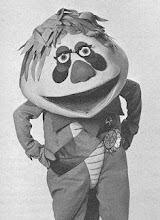
They were known as the Miles Davis Band, the Miles Davis Nonet, and even (rather humorously) as the Miles Davis Tuba Band, but this short-lived (1949-1950) collaboration of jazz giants is best known by the name of their sole, groundbreaking album: Birth of the Cool.
BOTC is a musical milestone for many reasons. First and foremost, the group is generally credited by music historians as spawning the cool (or West Coast) jazz movement - a reaction to and retooling of bebop. Additionally, the band was also a true supergroup. Besides Davis, BOTC's roster included (among others) Max Roach, John Lewis, Lee Konitz, and Gerry Mulligan. Although they never performed at any of the band's live engagements, notable brass players JJ Johnson, Kai Winding, and Gunther Schuller all contributed to recording sessions that eventually led to the album.
The group's instrumentation (trumpet, horn, trombone, tuba, alto saxophone, baritone saxophone, piano, bass, and drums) was a heretofore unexplored combination. Davis, Mulligan, and tubist Bill Barber, have all said to some extent that the intention of the group was to assemble three pairings of horns that were treble and bass equivalents of each other backed by a traditional rhythm section. While this effect is audible, scores of the original pieces composed for the group (including titles by Mulligan, Lewis, and erstwhile tuba enthusiast Gil Evans) do not visually indicate those relationships.
The tuba, while not necessarily a 'lead' instrument in BOTC arrangements, participates as a full-fledged member of the horn section, playing complex rhythmic figures, melodic ideas, and vital independent harmonies. In short, the tuba was treated as an equal of the other instruments and Bill Barber's capabilities shined (Barber also played on John Coltrane's big band album Africa).
Oompahs be damned.

No comments:
Post a Comment